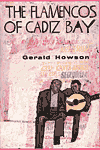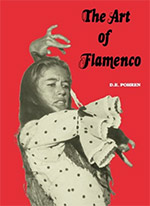
At the outset of discussing setting The Mapmaker’s Opera with Béa as a Musical, I indicated that I would try to suffuse the musical with a true sense of ‘toque’: an expression referring to all aspects of the guitar in Flamenco. As alluded to in my previous discussion on this subject, that pretty much put the cat amongst the pigeons!
As part of my this journey trying to adapt my classical guitar technique to something resembling very ham-fisted flamenco guitar performance; whilst simultaneously attempting to come to grips with all aspects of Flamenco music theory, I also embarked on a journey to read as much as I could about Flamenco in general. There are a few books that are simply just worth reading for the sheer joy of their narrative.
The first of these is a biographical memoir by the English writer, Gerald Howson. The book is The Flamencos of Cadiz Bay. Originally written prior to 1965, and relating to Howson’s sojourn in Spain between 1954-7; ostensibly as an ESL teacher, the book was re-published in a second edition in 1993 with commentary by the author reflecting on his own writing nearly thirty years prior and the way that life in Spain had radically changed. You have to keep reminding yourself that this is not a novel, and that the author is relating stories of his own experience. Captivating from beginning to end, Howson’s Spain is at once romantic and beautiful and yet brutal and austere. The characters that fill the pages of his storytelling are nearly all larger than life, but never does one get the sense that his descriptions of either people or events are merely inflated rhetoric. I truly recommend you tracking down a copy of this book. A word to the wise: read the appendices whilst you’re reading the book, rather than at the end. It would, frankly have been better for the book to have had footnotes. Aside from this small quibble, I learned more about the form and structure in Flamenco from reading this book than I did from books that were meant to explain these concepts to me – and the book doesn’t even set out to do that!

The next book is D. E. Pohren’s The Art of Flamenco (revised Ed.). This is equally fascinating, but I’d suggest reading it after The Flamencos of Cadiz Bay – the reason being, that the in-depth explanation of the various cantes can be a bit overwhelming. It is, nonetheless, regarded as the bible on the subject. Don’t get me wrong, it’s not a dry, academic read at all. If nothing else, Mr. Pohren’s passion for his subject matter comes through clear and strong.
Pohren also has two other related books on Flamenco: a book about Paco de Lucia and his family and Lives and Legends of Flamenco: a biographical history.